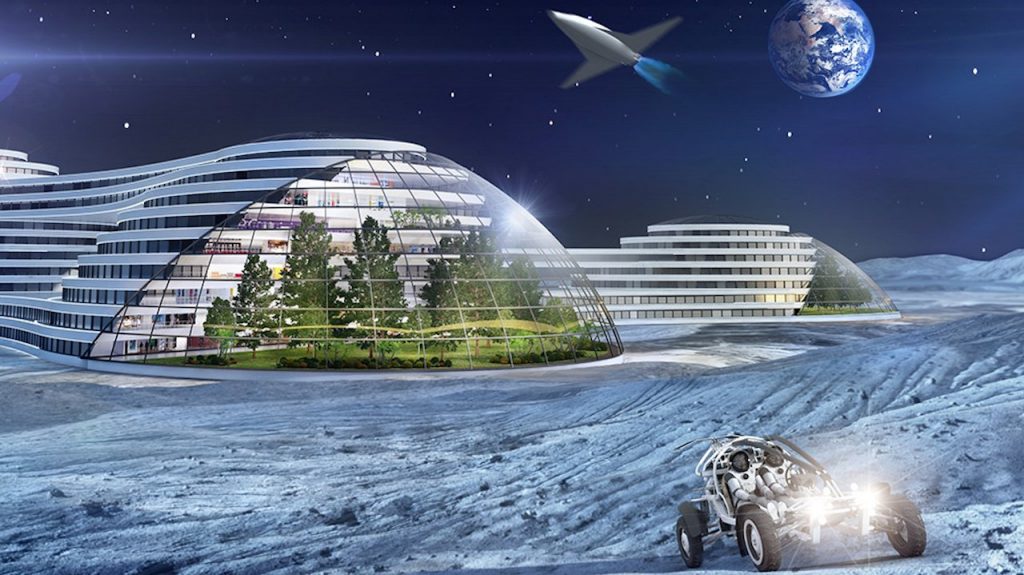
Have you noticed. We are in the space age. Lots of countries and corporations are lifting payloads into earth orbit and beyond. The costs are down by a factor of 5 since Space-X introduced the Falcon 9 booster rocket. Greater savings are coming with Blue Origin, Boeing, Lockheed Martin, and NASA stepping up to compete. China, Russia, and India have also demonstrated their ability to launch payloads.
There is a multitude of business opportunities in the space around the solar system near earth. Also, there are earthly issues that can be solved by expansion into the heavens. So, What is the motivation to go to space?
One motive for the space age is to preserve the ecosystem on earth. Many are concerned that humans are destroying the environment on earth. They claim plastic garbage, air pollution and climate change are urgent issues that need to be addressed with high priority. Yet, the core problem for humanity is the increasing consumption resulting from population growth. That consumption may soon outstrip the resources on the planet.
The earthly options call for reducing the energy footprint of the economy and developing new innovative clean methods to feed, supply, and serve growing populations. However, solutions that assume limits to growth can lead to a tragic state for humans. Increasing competition between alliances for resources can lead to world war.
Futurists such as George Orwell in 1984, Aldous Huxley in Brave New World, and Harry Harrison in Soylen Green have warned about the sad world we could create by attempting to force human beings to conform to a prescribed program. Especially to a prolonged program of austerity and rationing.
The optimum goal of a happy society is to create a golden age where resources are available to fuel long periods of economic expansion. Most economists agree that a continuously growing economy is needed to comfortably sustain any nation’s population.
The solar system has those accessible resources to power such a golden age. There is room for economic expansion far into the future. So the primary reason for the space age is to take advantage of the vast available growth opportunities in that frontair.
The solar system is indeed the next frontier. Medium term business planning can start today. The Killer Applications in the next decade of the space age can easily be:
- Low Cost Payloads to Earth Orbit
- Fusion Energy Research and Development
- Energy Intensive Manufacturing Operations in Space
- Moon and Near Earth Asteroid Mining
SpaceX has pioneered low cost launches. Payload slots are available and can be booked now. Larger sized payload capacity will come online by 2021. We can expect the Blue Origin’s New Glenn, NASA’s Space Launch System, and SpaceX Big Falcon Rocket to compete for these large payload launches.
Nuclear Fusion research and development can be accelerated by taking advantage of the high density of solar energy above the earth atmosphere to power reactors. This can enable more rapid test firings in a fusion reactor to find the right combination that can predictably yield positive energy outputs.
Manufacturing operations in space can take advantage of concentrated solar energy, low gravity, and near vacuum environment to produce esoteric compounds, materials, devices, and other innovations that would be costly or impossible to produce on earth.
One multi-purpose business opportunity is a space station in earth orbit. This can satisfy a demand for accommodation from visitors, workers, cargo, research, development, and light manufacturing.
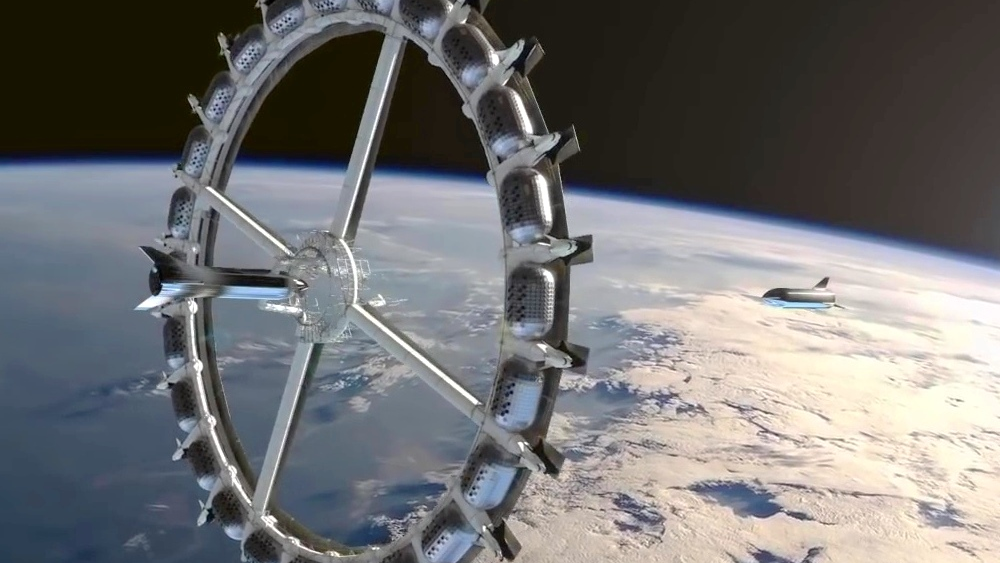
The Space age business opportunity includes mining and refueling operations on the Moon. The Moon is an advantageous resource since it is the closest large body to earth. The key benefit is that the rocket power needed to lift-off from the moon is much lower that used to escape earth’s higher gravity. The moon will become an essential base for further expansion in the Solar System because it can be the first supplier of bulk materials that cannot be economically delivered from earth.
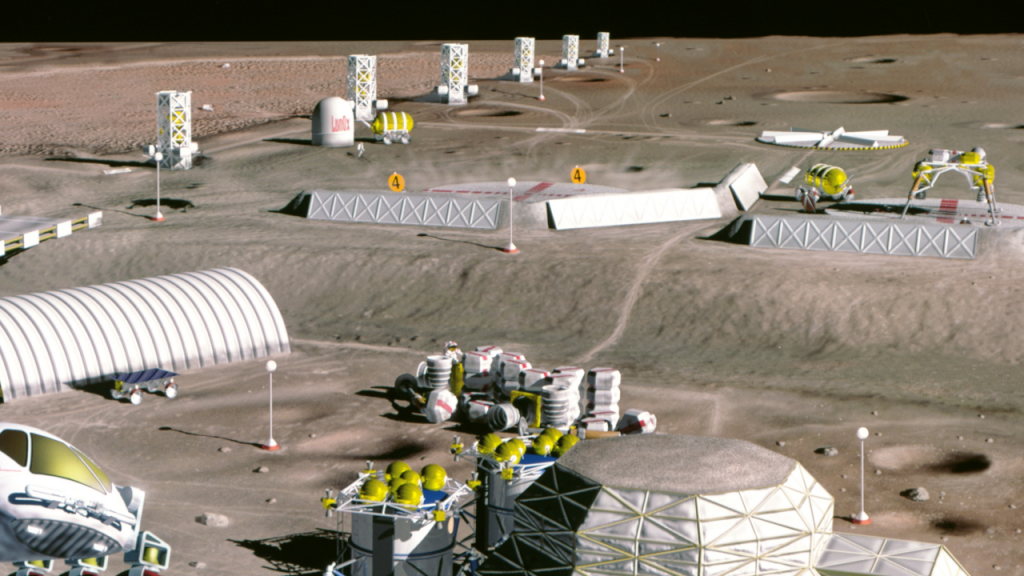
Once we have built the space station and the moon base. the next steps would include Asteroid Mining Rigs and Earth Ships to house workers, residents, agriculture, and production facilities.
Gerard K. O’Neill, A Princeton physicist, was one of the first to describe a Space Colony or earth ship with its own agriculture and ecosystem that can support the population of a town or small city. The Science Fiction movie Elysium provides a visual display of what an O’Neill Space Colony might be like. Jeff Bezos established Blue Origin to contribute to the realization of Space Habitats floating around in the solar system in line with O’Neill’s vision.
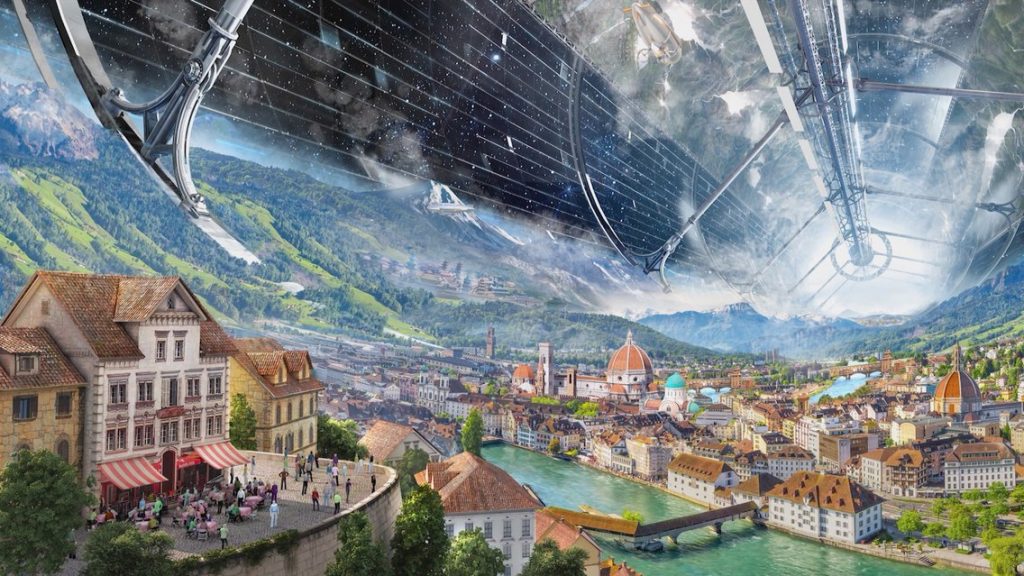
To my mind a more realistic earth ship might look like an asteroid as depicted by David A. Hardy’s in the illustration below. The reason being that humans need radiation protection. This can be better supplied by a 20 foot or more barrier of rock and dirt between the sun and the ship’s inhabitants. In reality this earth ship would be made of a rigid interior structure covered by raw or refined asteroid material contained in large bags. These would be stacked and strapped over the super structure similarly to the way sand bags are done.
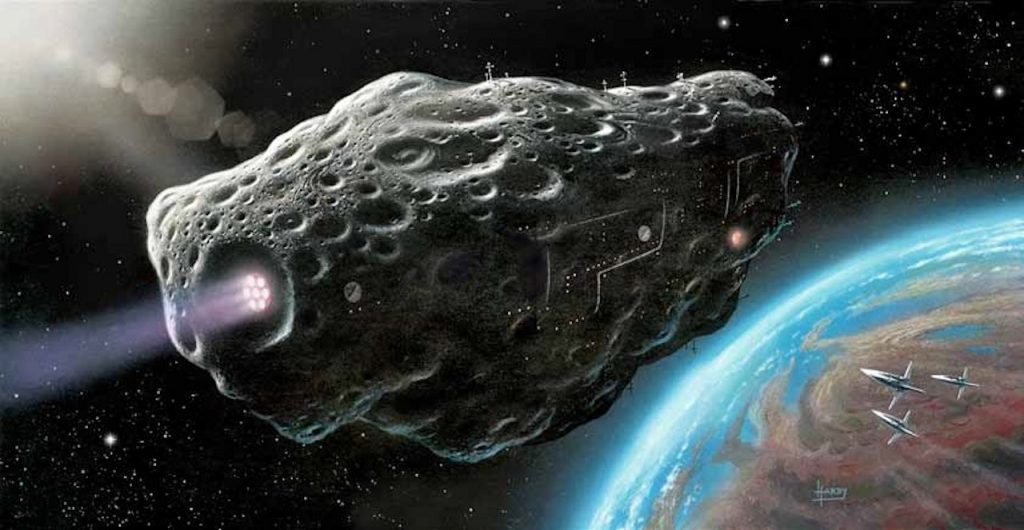
Elon Musk set his sights on a craft with the range to get to Mars. Space Colonies on Mars may not happen until much later in the century because of the 6 month average travel time. However, a craft that can take you to Mars can take you other places far away.
As we moving along in this space age we are likely to see multiple earthly trading blocks forge different paths. Each block consisting of a group of independently governed nations connected by layered global network for exchange of ideas, payments, and deliveries. It may not be long that some corporations gain the status of a nation.
Humanity will colonize the solar system driven by entrepreneurs, investors, and adventurers motivated to capture a financial return. Environmentalists will encourage this direction since they see it as an opportunity to preserve the ecology of the planet.
